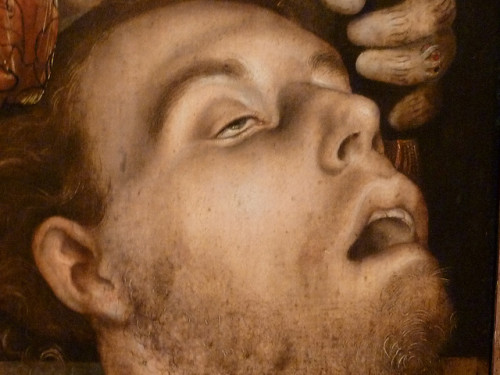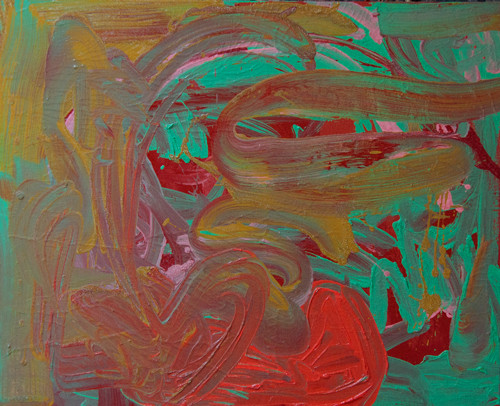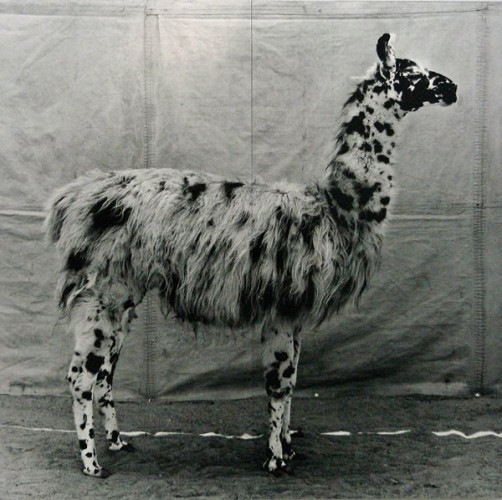
Sam Laughlin, photography.
“Our understanding of ourselves is a narrative understanding, that is, we cannot grasp ourselves outside of time and hence outside of some narrative. There is an equivalence therefore between what I am and the story of my life.”
Paul Ricoeur
“I confess that I am much more concerned about the current growth of the “desire not to know,” as Julia Kristeva puts it, and the seemingly triumphant success of the pharmaceutical cocktail over the spoken word. There once was a brilliant, if chilling, ad for a certain tranquilizer: “Not a pseudo-solution for problems, but a solution for pseudo-problems.”
Ernst Falzeder
“One of the effects of this shift in the focus of production is the speeding up of the turnover time of capital, which helps the process of the production of profit. But of course a side effect of this is to speed up the experience of time, and by speeding up time to bring about situations where forgetting is enhanced. Forgetting is absolutely crucial to the operation of this kind of obsolescence and absolutely basic to the functioning of the market.”
Paul Connerton
“The day is short, the bitter night long–
Why not take a candle and go wandering?”
Anonymous poet
Han Dynasty
It is something I have written on before; the odd degrading of taste in the U.S., but also largely in Europe as well. Cutting across this topic are two other issues; one is the hegemonic power of film and TV, and the second is the reluctance of western cultures to see in art, popular art certainly, any political or spiritual value. And perhaps thirdly is, under this hegemonic rule of film, why there is so little serious analysis of the industry that produces it.
First though, there is a real question about how Western culture has come to think of art. In terms of narrative, fiction, or journalism, and then by extension in film and TV, the sense of ourselves-as-stories has faded. In other words where once the telling of stories meant, by common agreement, that something of our own life was being told in every story, today the notion of story is connected to film and TV and this medium is presented to people as NOT being about their own story. This is one of the key semi hidden realities of *entertainment* and mass culture, I think. Nobody believes TV shows are foundational myths, nor are they narratives that shape our morals, nor are they roads toward insight and awakening. They are entertainment. They only nominally are seen to reflect society back at us. Lip service is paid to that idea, but nobody believes it. Entertainment is a production of forgetting, but in that lies a contradiction. The contradiction is that while officially designated as ephemeral, the entertainment industry encloses all discourse today.

Hans Cranach, early 1500s. St Boniface, detail.
But there is something else, which is a deeper question in a sense, and one linked, I think, to mimesis. I am reminded of this almost daily whenever the subject of art is brought up. I am reminded that the parameters for any discussion of art or entertainment are very vague, and almost produce a kind of anxiety in people. There are critiques, and reviews and gossip, but in very little of any of this is there a reference point for why anyone is bothering with the topic, unless of course it’s money. But if one puts aside the economic issues, the discussion of culture becomes very vague.
Mimesis goes back much further, as a concept, than the Greeks, but it was in Greece that today’s conventional ideas about mimesis were formulated. The base level, from the word mimos, means imitation. But it also always meant representation. Mimema were persons who imitated, and the action was mimesis. Homer did not know the word, but Aeschylus did. And it was during the fourth century it was associated with representation through dance. Now the significant juncture in this evolution, at least in the Grecian world, was with Plato, for his third definition (following emulation and imitation…narrowly, of a thing) was *metaphor*. Plato said mimesis was interpretation of a speaker. Someone, an actor or dancer, can imitate something absent, or general, i.e. metaphoric. Now this is a very reductive explanation of the Platonic position, but the point is, I think, that imitation very early on was recognized to exceed the idea of a guy pretending to be a horse he just saw gallop past.

Sarcofago dio portonaccio, Rome, detail.
There is an important aspect to Greek thinking on mimesis, and Jean Paul Vernant points to it when discussing Plato’s Cratylus. Gunther Gebauer writes …“According to Vernant’s analysis, these Platonic ideas of the image are bound to archaic ideas from Homer’s time, for which the characteristic factor is that something nonimagistic, something invisible, comes to expression in the image.” The example are cemetary statues, figures meant to conjur the dead in the sense they can take on the psyches of the dead. The dead made visible. But the dead are being made visible by first clearly establishing themselves as dead. Or absent. As Gebaur says, the mystery and otherness of death becomes visible. It is metaphor again. The statue is a metaphor for not just a dead person, but for death. In the cold grey stone we see *death* represented.

Polixeni Papapetrou, photography, media.
Now, Plato marked the disappearance of the old oral culture and the arrival of the new alphabetic culture of writing. That is a huge discussion by itself, but for the purposes of this post the written had subsumed the oral by the end of the fifth century B.C. In the middle ages the notion of mimesis actually shed much of the literal imitative aspect of this idea, and followed imitatio Christi, the imitative act was always an action toward the divine. It is also simply a relation to a previous mimetic act. Layers accrue. One detail is added to another to another to another over hundreds of years. A simple cross or an arch or vault for buriel take on details of imitation. It is also the installing of *Nature* as a conceptual idea. Or at least formalizes it. It is worth noting that the Medieval idea of mimetic deeds, done properly, with an eye to the past, bears a certain resemblance to Chinese aesthetics in the pre Confucian period. Chinese aesthetics is rooted in ritual and practice, with an idea (at least the classical theory) to harmonizing emotions. Representation was not the goal. Recognition was not the goal. Or rather, not the recognition of the outer world. One did not paint a mountain in order for the viewer to stare and then recognize, ah, a mountain. In the morning. In the mist. But then this emphasis on harmony came out of music, firstly. So the mimetic was de-linked from the visual reading of similarity. And rather was bound to familiar repetitions of form. Mimesis was always metaphor in a sense.
But representation changed forever with Shakespeare. This is another level of writing, if one thinks about it mimetically. Now Gebauer and Wulf, in their exhaustive book on mimesis (Mimesis; Culture, Art and Society) peg this change to Montaigne and before that in a sense to Erasmus. And then to Shakespeare. But Shakespeare was theatre. Theatre means actors. So, if mimesis is not simply imitation, and if written text changed how representation was perceived, theatre…Shakespeare’s theatre, invented modern mimesis. This jump cuts to Adorno, of course, and modernist aesthetics, but for the moment I want to look at Shakespeare. The recitation of text, dialogue, is not simply representation. It is a form of thinking. The text thinks the audience. This is one of those ideas that start to sound absurdist, but in fact something very significant happened with Elizabethan drama. Mimesis in Shakespearean narrative returns the listener to something distant, something from the oral past. But it is heterogenous, and the mimetic action is personal at the same time that it is collective. This is the exact moment of de-stabilization. Why do people create? I know that if mimesis were only imitation, and representation, few people would bother after the age of seven or eight. But the mimetic action, when it becomes metaphor, becomes much more than metaphor. It becomes a sort of existential reflex search for who we are. It links the personal to the collective. To the *other*. The actor is in our head and he or she is on stage. The formation of our psyche, our Oedipal narrative is echoed on stage, as is the story of our society. The listener is invested in the story. Stories are always stories of ourselves (except when they intentionally try not to be). All stories are crime stories, and all crimes are emotionally pegged to guilt and shame. And all stories are about homesickness.

Loris Greaud. Installation.
There are no facial expressions for shame. Shame is hidden. Guilt is partially hidden, at least in western society. The infant born into estrangement, and rivalry, recognizes that feeling the rest of his or her life. But the trauma remains occluded. Death, the death drive, thanatos, is absence. The cremorial and cementary statues metaphorically present the absent. Looking forward and looking backward, we see only absence. The role of narrative is a very large discussion, but one of the dimensions of theatre is that it is recreating a psychoanalytic experience in mediated form. Our repression is linguistic, on one level. Lacan said the structure of the unconscious was the same as that of language. The repressed material is always a story. The narrative, on stage, is always re-narrated (mimetically) by the audience. Our desire is why we have theatres, why there is a stage. For desire is performance. As Ricoeur says, the analytic cure is bringing to language what has been excluded from language (I paraphrase). This process of excavation entails metaphor, but also symbol, or more precisely desymbolization (per Mitscherlich). It was Freud who saw the censoring mechanisms of our psyche as linguistic. In any event, the narrative on stage is re-created in our interior and simultaneous narration, which I always sort of imagine like the UN translators speaking into the ears of various foreign diplomats. Or the Polish *lektor* used to speak the subtitles of films. In this process, to reference Lacan again, the other is never the other we desire, or think we desire. This is the essential reason for art in my humble opinion. The imaginary is simply the working through of our own trauma, and, significantly, the working through of our experience of absence, and its relationship to the *other*. And by other we include society.
However and to what degree one accepts the Lacanian opposition between the imaginary and symbolic, the narrative exists on this border, this, again per Ricoeur, ‘border between two countries, two political regimes’. As he says there is a linguistic exclusion, and only narrative is there to reunite this exiled material. These are the primordial metaphors that are reborn over and over. Psychoanalysis is the reconstituting in narrative of the memories of father and mother, and childhood desire and ambivalence. In theatre then, to return to Shakespeare as the example, the actor becomes hugely important. The unspoken, the gestural, the facial expressions, and all that cannot be said, are the techniques for reconciling our schizoid psyches.

Ralf Dereich
“Shakespeare instills in mimesis an unprecedented intricacy. Mimesis is not only a force that refers people to one another and renders them similar to each other, but one that divides and destroys them; merging and diverging, that is to say, appear in equal measure in mimetic desire…Shakespeare represents entanglements in mimetic desire in plays with comic and tragic outcomes. In the former case, the mimetic conflict is playfully resolved; in the latter it is unresolvable. The destruction of the social order in a mimetic crisis, the sacrifice of a scapegoat, is the result.”
Gunther Gebauer
Adorno would suggest that mimesis was the genesis of being human, of being civilized (a loaded word). The fear was a return to the irrational, to the nightmare of Nature. Hovering over all this is, of course, a fear of death. Mimicry is also always a miming of the dead. The death instinct, stasis. The tendency is for all people to submit to their surroundings. And here is the strange haunted contradiction of existence; as Freud and Adorno both recognized, that in the development of adaptation (including mimesis) there is a submission to this adaptive process that as it is repeated leads to the character armoring and rigidity of the modern man. If the earliest humans mimed the world around them, in fear, then as metaphor entered, as text shaped the stories people invented, the self control intensified.

Balthasar Burkhard, photography.
“Man’s domination over himself, which grounds his selfhood, is almost always the destruction of the subject in whose service it is undertaken.”
Adorno
Art is magic, but a magic removed from goals of control. Still, on the Shakespearean stage a form of thinking takes place that is a thinking about ourselves. The mimetic narration is now more directly connected to our own history, our own story, and therefore is more directly linked to the social and political.
Larry Tye, Boston Globe journalist quoted Edward Bernays:
“This whole matter of effective counter-Communist propaganda is not one of improvising,” Bernays noted in a 1952 memo to United Fruit’s publicity chief. “What is needed,” he added, is “the same type of scientific approach that is applied, let us say, to a problem of fighting a certain plant disease.”
Domination has become the framework for narrative. If American Sniper broke box office records this week, it is testament to the pathological endgame of our civilizing process. A process it seems now fully broken for the societies of the Imperialist west. Most acutely, naturally, in the U.S. As Gebaur and Wulf write: “Subjective self empowerment entails a commitment to universal disposability.” The subject sees self domination as the reasonable or patriotic or responsible. Where once the role of art, or even of community ritual, of shamans and selfless cooperation was mediated by how story and image were employed, today the western world operates under the logic of men like Edward Bernays. Self loathing is seen as self disenfecting, but you cannot cleanse yourself without first cleansing the world around you.

U.S. soldiers somewhere in central america, apprx 1898. Guarding United Fruit interests.
Art is crucial. But not entertainment. Being entertained is actually regressive. The Shakesperean stage was the coming together of several strands in mimetic evolution, and it introduced formally the actor speaking our own narrative at the same time as speaking societies story. The rise of instrumental rationality was a belief that one thread of observation, one that produced remarkable results in the material world, could be relied upon for all things. The conceptualizing of self, the separation of the subject from the object, and by logical neccessity, then, the shunning of mimesis, leads to isolation and alienation. Here Marx enters the discussion. This is what Adorno and Horkheimer called disenchantment. Sacrifice is internalized. Advanced mimesis becomes a taboo, a prohibition. In this sense, Bruce Alexander and others like Gabor Mate, in their work on addiction, are suggesting the need for connection is primordial.
Johann Hari wrote:
“But in the 1970s, a Professor of Psychology in Vancouver called Bruce Alexander noticed something odd about this experiment. The rat is put in the cage all alone. It has nothing to do but take the drugs. What would happen, he wondered, if we tried this differently? So Professor Alexander built Rat Park. It is a lush cage where the rats would have colored balls and the best rat-food and tunnels to scamper down and plenty of friends: everything a rat about town could want. What, Alexander wanted to know, will happen then?
In Rat Park, all the rats obviously tried both water bottles, because they didn’t know what was in them. But what happened next was startling. The rats with good lives didn’t like the drugged water. They mostly shunned it, consuming less than a quarter of the drugs the isolated rats used. None of them died. While all the rats who were alone and unhappy became heavy users, none of the rats who had a happy environment did.”
The war on drugs is a war on several things; connection, desire, and dreams. It’s a war on Dionysian energy. Wilhelm Reich saw a version of this, too. In Portugal, as Hari recounts:
“The results of all this are now in. An independent study by the British Journal of Criminology found that since total decriminalization, addiction has fallen, and injecting drug use is down by 50 percent. I’ll repeat that: injecting drug use is down by 50 percent. Decriminalization has been such a manifest success that very few people in Portugal want to go back to the old system.”
In other words, the rigidity of adaptation means shunning and shame, the hidden realm, without even facial expressions, is the cause of not just addiction, but self punishment on many levels. The internalized sacrificial victim is ourselves, but that mechanism doesnt work. Not as myth. It works our logically only as self extermination.

Four Mandala Vajravali, Thankga. 1430. Tibet, Sakya School.
Work such as American Sniper is not engaging the viewer in mimetic search. It is a cartoon retelling of a message that says the armored self, the emotional plague, the violence and inequality around us is good. Killing is good. It is not mimesis, it is a schematic for death and violence. You read without that interior narrator, for its only a blueprint. A blueprint for building a death machine.
Art, aesthetic experience, is partly the viewer submitting to the recognition that the *I* is similar to the artwork. But similar because the artwork is allowed its narration. It is not the rigid mimicry of fear, that prehistoric fear of Nature; it is the submissive relaxing of those anxieties in an effort to reclaim what we have lost of ourselves. In theatre this submission is shared. The actor recites the dreams of everyone. It is no surprise that today the only validated theatre is that which shrinks this realm and props up in desperation the world of disenchantment. Bourgeois melodrama is Nurse Ratched reciting the rules, it is not Hamlet or Prospero conducting dream analysis.
Adorno came to the United States in 1938. He studied the effects of radio musical broadcasts. The effects on the music. But he soon forgot that and realized that what mattered was the audience that was evolving in the U.S. It was one, he thought, that art could not reach. Hullot-Kenter wrote:
“Adorno observed the contemporary American has been so overwhelmed by real and constant anxiety, has been so broken in on by heteronomous forces, that this autonomy and its capacity to breach subjectivit’s own claustrum could no longer be presumed. Adorno thought that this incapacitation of the person began in earliest childhood, and he noted several aspects of what he believed had happened: first the world no longer provides actual images to the American child, but only images that arrive with the insignia of their own untruth stamped on them; second the objects of action have all become technical objects that primarily demand adaptation to their own instructions, third the collapsed family no longer provides a buffer between society and person, which is part of why the American child is so flooded with anxiety, fourth the traditional language of people has been supplanted by a language of advertisement that no longer fulfills but instead leaves people speechless. Fifth the libido is directed toward tools…and sixth…the transformed relation of people to their own nature, their own bodies.”
This is 1938 mind you. Seventy five years ago. A year after Freud died.

Tofer Chin
Amy Buzby wrote: “No radical political project can succeed today unless it simultaneously resists domination as it operates both in society and in the mental life of individuals.” Yeah, I’d say that’s right, and it is where art and mimesis come into importance. But it is also because of the mental costs of resistance. The percentages of madness among both radical artists, and activists is very high. It takes a toll to refuse. The retreat from radical form in art is given false compensation by notions of success and agreement. This is as Ive said before, the society of agreement. Robert Hullot Kenter wrote that Adorno’s Aesthetic Theory is a book “that stands in utter opposition to what we are.” He goes on to posit that taste needs a project of reclamation. An exactitude. I would say that this then connects to a reclaiming of the radical nature of psychoanalysis as well. For mimesis is not engaged because we can cry at Pepsi commercials, or laugh at the neurotic comedies Hollywood spews out. Mimesis is the tragic confrontation with ourselves, with that which a system of domination is even now working overtime to erase.
The runaway success of a film such as American Sniper speaks directly to the repressed guilt of the white bourgeoisie today. To the continuing attraction of false fathers, to a worshiping of authority. But more than that it is structurally appealing on a psychic level for really this is the film version of the death instinct. It is interesting to compare it to a film such as Foxcatcher which questions the idea of power and domination, that suggests the military industrial complex and its links to extreme wealth contains erotic components, and this makes today’s audience, the one Adorno saw as incapable of cultivation, uncomfortable. Better to just give in and embrace Death. The resurgent racism seen today, from U.S. police departments to the demonizing of Muslims, is intertwined with guilt, and with an atrophied mimetic potential. In The Authoritarian Personality Adorno and his collaborators identified a refusal to deal with guilt among those predisposed to align themselves with fascism. As Amy Buzby writes (in her very fine book Subterranean Politics and Freud’s Legacy); “Where prejudice and the disposition toward authoritarianism is found, the unconscious is dissociated.”

Klavdij Sluban, photography. Youth Detention Center, Tibilsi.
The individual who identifies with American Sniper is one who, (again per Buzby) has “failed to develop the capacity to test and engage reality.” Art was a hedge against conformity and blind obedience. The autonomy of the artwork was exactly there to allow for the dialectical process of mimesis. Without such challenges, art is simply propaganda. The mass hostility toward Muslims today, in the U.S. and Europe, is proof of a group psychology of bad conscience. The obvious emotional shut-off and disconnect of such mass prejudice serves Empire, but is constructed on the basis of a disfigured and immature personality. The modern individual in the advanced west is one who believes in the appearance of his *individuality*, but is really a lonely rat in the cage. The evolution of mimesis is linked at it’s most advanced stage, with narrative. It is worth pondering again the effects of a society in which narrative has been reduced to almost first grade reader levels. The appeal of sentimentality is, of course, an aspect of sadism. It sets up a world view in which emotion is channeled into infantile desires and rewards. Couple this to projection, perhaps Freud’s most cogent theoretical construction, and it’s not hard to understand the reflexes of bigotry and hatred. The guilt of the white bourgeois populace today, built on two hundred years (or more) of colonial crimes and violence is never dealt with. It is projected onto Muslims or black teenagers or just generally the poor and vulnerable. But guilt is complex, and in the deformed mass culture of the U.S., guilt has no meaning outside legal contexts. It is mute and silent. Like shame, it really has no face. The projection of white men in particular is directed at, I think, firstly women. Second it moves outward to include Muslims, and blacks and Latinos. But the misogyny that resides at the core is worthy of an entire post, probably, for it is the most masked and buried, and hence the most volatile. The loss of ability to mobilize mimetic readings means that the individual today is inextricably tied into a sado/masochistic dynamic of punishment and violence. The population is treated to endless kitsch stories of faux guilt that require endless confessions of *taking responsibility*. Guilt is both accepted and projected out. But that which is accepted is never really for actual crimes. It is for crimes that takes place in this manufactured false reality of screen life and mass culture. This dynamic only intensifies the repression of real feelings of guilt. The false admissions of responsibility are approved of ahead of time, and the entire 12 step cult and new age self improvement guides are there to salve the real psychic wounds, but only temporarily. This is a society now, in the U.S., that tacitly accepts torture and mass killing. At least among the more affluent and educated classes. The deepest pathologies are those of the upper twenty percent. That educated white demographic that determines taste and defines culture and also among the ruling class that make policy.

Bharti Kher
“…there is an element of the historically dynamic, whose form is dialectical, in all great myths as well as in the mythical images that our consciousness still carries. The mythical fundamental elements are in themselves contradictory and move in a contradictory manner (recall the phenomenon of the ambivalence, the ‘antithetical sense’ of primal words). The myth of Kronos is just such a myth in which the most extreme godly power of creation is coupled with the fact that he is a god who annihilates his children. Likewise, the mythology that underlies tragedy is in every instance dialectical because it includes the subjugation of the guilty man to nature at the same time that it develops out of itself the reconciliation of this fate: man raises himself up out of his fate as man. The dialectical element here is that tragic myths contain at one and the same time subjection to guilt and nature and the element of reconciliation that transcends the realm of nature.”
Adorno
“The Idea of Natural History”

I stood near a woman, a Fox News middle class woman at a chocolate workshop in Concord, California, this morning and I listened to her discuss American Sniper. “They want to kill us. And people are criticizing this film. This man was brave, he was heroic to kill the enemy. The babies grow up to be terrorists. We should slaughter them all. Otherwise they will get us.” She said it calmly, matter of factly. And then she said, ” I can not believe people are criticizing Netanyahu. I just don’t get it. I just don’t get it.” She quoted Bill O’Reilly. She was about 65 or 70. She was terrified, lost, angry but the facade was the rock solid conviction that “these people” in the Middle East were not human. It was one of the greatest examples of evil I have ever witnessed. The woman she spoke to, about the same age, shook her head yes but never said a word. THAT is now the American populace. At least this woman was speaking it aloud. “We should kill all their babies”. Chilling.
“Chinese aesthetics is rooted in ritual and practice, with an idea (at least the classical theory) to harmonizing emotions. Representation was not the goal. Recognition was not the goal. Or rather, not the recognition of the outer world. One did not paint a mountain in order for the viewer to stare and then recognize, ah, a mountain. In the morning. In the mist. But then this emphasis on harmony came out of music, firstly. So the mimetic was de-linked from the visual reading of similarity. And rather was bound to familiar repetitions of form. Mimesis was always metaphor in a sense.”
That is very true. And I can testify to the fact that there has traditionally been a very different conception of individuality. A master calligrapher has to go through an apprenticeship where all he/she does, for years, is to copy as close as possible the script of old masters. The idea is that in trying to imitate, they are copying the essence, the energy, that is inherent in the work of the old masters. Through an application of sympathetic imagination turned into physical habit, internalized into the “feel” of the fingers, the novice channels the energy of the old masters. There’s also a conception of felt history, as the novice is encouraged to copy with exactness as many different masters from different periods and styles as possible. In this way, all of the aesthetic ancestors of the past accrue like sedimentary layers as the novice slowly learns to channel all of them.
Once the novice has done decades of such imitative practice, THEN do they naturally, of their own accord, break free and develop their own style. And far from it for there to be disregard for individuality in traditional Chinese conceptions, far from it. The fact that each calligraphy master is praised for their unique personal style is proof of that. Instead, there is a faith that the individual essence (qi) is so urgently present and so unmistakable that a calligrapher, through sacrifice and the emptying of self, cannot help but manifest their harmonious, true inner nature, and their individuality becomes present like a unique flower, naturally.
Of course in Western conceptions of aesthetic growth, equal emphasis is also put on apprenticeship and mastering the tools of the trade. However, I think perhaps due to the Christian conception of individuality and soul, the relationship is subtly different. There is more of the idea that the individuality exists a priori, rather than being emergent. The individuality, Self, is supposed to be a consciously aware entity in the artist, present from the beginning, even when they are on their apprenticeship, and the learning process is the self gaining mastery over tools as provided by past masters and history. The Chinese conception treats the aesthetic individuality as emergent; it only grows organically out of the absorption of the Other, Pastness, History, into the self; before that, there is no Self to speak of.
Another distinction I can think of is the subtly differently configured idea of mimesis. In western aesthetics mimesis is foregrounded as imitation of the real world. The representation imitates an objectively existing, non-artistic reality. In Chinese painting, there are conventionalised, agreed upon ways of painting things. Mountain, flower, bird — each has a particular “proper” brushstroke. But far from being ossified, these things are very much expected to develop and change, as can be seen by the gradual evolution of style over history of Chinese painting. However, the novice artist is not expected to imitate the objective object directly, but copy the past master’s brushstrokes of that object, very much like the calligrapher (which is the same person, as traditionally Chinese painting and calligraphy is not separate at all). The “conventional” brushstroke isn’t actually conventional in the Western sense — it exists as convention because it is agreed to capture some essence, “qi” of the actual object. So, the brushstroke of the mountain doesn’t imitate the photographic reality of the mountain but its “qi”. And the artist, by imitating these conventions during their apprenticeship, is not just performing mimesis on the objective world, but also mimesis on the “qi” of the previous masters who have painted the same object. Then of course at some point they combine with observation — as Chinese painting very much still puts value in observation, and there is a kind of mixing of the two registers of mimesis — mimesis of past artists and mimesis of the object.
Of course this is my highly amateur summary, and I’m not a historian of Chinese art. But that is what I know and find interesting about the varying conceptions of mimesis.
I should just add that I’ve simplified “qi” when in fact Chinese metaphysics often treat of the trinity of “jing” (essence), “qi” (breath), “shen” (expression-feeling), which is sometimes blurred or used interchangeably depending on the interpretation of the words. But the intricate metaphysics is something beyond me and so I have not tried to distinguish between the 3 closely related concepts.
“Most acutely, naturally, in the U.S. As Gebaur and Wulf write: “Subjective self empowerment entails a commitment to universal disposability.” The subject sees self domination as the reasonable or patriotic or responsible….. Self loathing is seen as self disenfecting, but you cannot cleanse yourself without first cleansing the world around you.”
“Beneath this pop psychology that rules public discourse are the very structures of Capitalism. The individual may not own property, but he can treat himself as property and divide and sub-divide himself into various ownership allotments. Alongside this the individual is primed to accept his treatment as property by the ruling class. The culture of therapy provides ever new psychic self improvements akin to a fresh coat of paint or new rust proofing.”
These really hit close to home. I literally can’t live here anymore without feeling like my soul is being torn apart, piece by piece, as I become viewed more and more — by others, by myself — as disposable and interchangeable. I must scream, and yet my words come out as static. Is how I feel, anyways. It’s terrible and suffocating. My words are not my own, which means my images are not my own, which means my self is not my own.
@ Exir,
“I must scream, and yet my words come out as static. Is how I feel, anyways. It’s terrible and suffocating. My words are not my own, which means my images are not my own, which means my self is not my own.”
I have felt the same way.
Your description of the Chinese painting ritual makes a lot of sense to me.
@John (or anyone)
Is blushing not an expression of shame? And an involuntary expression at that… Happiness or anger, for instance, may be expressed like a mask, or covered with another mask; shame, when it is really felt, sort of seeps out all over the place, and in ways uncontrollable–in my experience… Maybe it isn’t so much that shame is “hidden,” but that people do not recognize it anymore…? Am I way off course here?
First…good comments Exir, that I want to think on a little while. @Calla….good question regards blushing. But no, I think blushing is not an expression, not a facial expression. It is a physical reaction, but maybe not to shame. Embarrassment …..yes. But I think shame erases the face, its the man without a face, in a sense. But let me ponder that as well.
Okay… I see what you mean about blushing not being an expression, per se, but it is an interesting body response because it is uncontrollable and seems to be always associated with a social/psychological reaction. An instance of the body clearly reacting to societal narratives without our conscious control.
I do think there is a difference between embarrassment and shame, but I think one may still blush from shame. I have done some research which makes compelling connections between anger and shame.
“But I think shame erases the face, it is the man without a face, in a sense” –why do you think that?
@joanna….
Just wanted to add that I never cease to be amazed at the influence of FOX news. But such conversations are hardly surprising at this point.
@calla……I think this goes back to what i wrote in the last couple blog posts…and in the coming one. I think we would have to dig into what more exactly we mean by shame. And thats a complex topic, but I think, in terms of how I think of that word, that it is this stopping of all interior movement. All mimesis, all memory even. But in what way and why does that happen is more complicated, and probably there is a lot to unpack in an historical examination. There is bourgeois shame and was tragedy, and they all sort of overlaped but also all exist in historically specific figurations. Humiliation is related to shame I think. I am wondering as I think on this if in today’s culture the idea of shame isnt changing, or hasnt already changed. The super ego is so grotesquely large now i suspect, and this dynamic of punishing and retribution has turned inward, that the possibility of shame might have eroded or become paralysed . But it has never been *expressed* facially…..although there is no doubt something wrong with that statement. What is the face of shame? I know the face of embarrassment and i know grief, and i know guilt even. I dont think shame has a face., I think it is this emotion that is stopped on the inside. That is its dimension. An interior erasing of the individual, at least for a time.
add:
Shame is not guilt. Public shaming seems connected with a refusal to admit guilt in a certain sense. I am no wondering if shame isnt imposed. And the individual has no face for shame for it is an absence. The stigmatizing discourse is coming from outside…its socially placed, collectively placed. No? Im asking and sort of free associating here.
http://www.moroccoworldnews.com/2013/09/104788/the-concept-of-hshuma-shame-in-moroccan-society/
I keep thinking though that shame is connected to humiliation. One can hang one’s head in shame. But that is almost the hiding of the face. On can feel ashamed by being guilty. Yet the face of shame seems unclear. I dont think there is one. Shame is also a byproduct of the narcissist. But it is repressed. Feelings of defeat or losing or being inadequate are experienced internally as shame. Low self esteem ….the individual feels ashamed. But its hidden. Its a hidden emotion. I think anyway. There is in certain Asian cultures this idea of loss of face. Thats sort of mild shame. In aboriginal society shame is a failure to be seen as a honorable model for the young. Shame is failure, and that seems to me to be lacking a face, that sense of failure cannot be expressed …not outwordly…..I dont know. Shame is the recognition that the other sees you that way. One may feel guilt all by oneself. Not sure thats true of shame.
Michael Lewis wrote that shame is that which the individual tries to distance him or herself from. It is easier to deal with guillt than shame. And he sees shame, interestingly as I wrote above, as connected to loss of memory.
I agree that “shame” is complex, and that maybe we are working off of slightly different definitions. After reading your comments, and the article you link to, I think I’m more concerned with whether we have the same definition of *face*…
I might define shame as that emotion which blossoms when one is faced with the reality of their own ignorance or “weakness”–as defined by that society’s values. And in terms of shame, it is always a social or relational ignorance. We realize that our previous “innocence,” or the previous behaviour we engaged in, which we thought was “good” or harmless, was actually a mark of our ignorance or insensitivity. I doubt narcissists would feel shame.
I am not sure that shame has been “eroded or paralysed.” Maybe for some, but I don’t think it is extinct. Maybe shame *seems* faceless or absent because it is such a powerful and painful emotion that we do everything we can, both consciously and unconsciously, to avoid recognizing it, experiencing it, or witnessing it. I think it is common for other emotions to occlude shame in order to keep it from overwhelming the bearer of the shame–and those who bear witness to it. Shame is a shared emotion. It asks a lot of the shamed and the shamer(s). Maybe shame hasn’t been eroded, but perhaps our capacity for empathy has…
I would not equate shame with guilt; guilt seems more cognitive, less visceral than shame… I think that shame is imposed, in a way, but I think it is a collective imposition. If it is a collective imposition, then the shame must come both from within and from without.
I think one can feel shame all by oneself, as long as one has “values” and an internal narrative that includes an understanding of a relationship, or responsibility to others (sorry, I know how you hate the word “responsibility,” that is the best word I have for now.) I agree that shame is a mark of failure, but I also think that shame appears at a moment of intense energy, that when harnessed correctly, could lead to powerful change.
I have considered it, and I think I HAVE seen the face of shame, and that I have worn the face of shame. If shame is “hidden” there are plenty of clues to its whereabouts. I am open to being dissuaded, but I’m not convinced yet.
You say that, “shame is the recognition that the other sees you that way.” …I think shame can also be when you realize that: YOU see the other ‘that’ way… and when you realize that your own shame has stemmed from an acceptance of a societal narrative or value which might not reflect your experience of reality.
@calla:
I think we are talking about different things here. But i disagree, I think, because firstly shame is connected to guilt. These are also, it should be noted, pretty fluid concepts. But shame…and this depends on the culture…is a sort of intensified guilt. One cannot have shame without guilt. The innocent cannot feel shame, but they can be stigmatized certainly. Shamed. Im not convinced totally about any of this and Im going to think on it some more. But I’d still stand by the statement that shame is without a facial expression, that its secret in a sense, for the individual. But as i say….let me think on it.
Apropos Chinese word for “lose face” — “diu lian” — “diu” actually has the sense of “throwing away” in addition to simply “losing”. Not sure what that implies, but yeah…
Also, in traditional Chinese culture (when Confucianism was still hegemonic), losing face was not just an individual matter, but is intimately connected to the concept of shaming your whole family. The individual being a reflection of the family, and the sins of the individual reflects the sins of the family, in a sense. That’s why it’s so bad to lose face, and the last thing a parent wants is for the child to lose their face on their behalf.
And while I’m at it, I just really want to repeat this section from Shakespeare’s “Richard II”
KING RICHARD II. How soon my sorrow hath destroy’d my face.
HENRY IV. The shadow of your sorrow hath destroy’d
The shadow of your face.
Isn’t that a brilliant line? It’s a lovely sentiment, and such a sad rejoinder, as well. Richard II has been living a delusion the whole time, thinking his emotions were real — but instead, all his griefs were mere show, insubstantial, so that he has no face he can destroy, only a shadow of a face. I think this really relates to John’s points about having no facial expressions.
Exir: that’s dynamite quote from Richard II. And the deposed king answers Henry 4 with the topper which follows. Devastating.
KING RICHARD II
Say that again.
The shadow of my sorrow! ha! let’s see:
‘Tis very true, my grief lies all within;
And these external manners of laments
Are merely shadows to the unseen grief
That swells with silence in the tortured soul;
I can think of one incident which I can deconstruct with regards to shame that helps me think about what it means. I used to go to a Japanese Buddhist temple in the UK. The people running the temple were all from Japan and hadn’t particularly integrated into British society, so they had a very Eastern point-of-view on how to deal with issues. In this case, they felt I had not paid enough money for my wedding (there wasn’t a specific amount asked for – I was supposed to understand how much to give without asking). I had disrespected them without realising it – I’m Western and therefore don’t pick up on the subtleties of Japanese requests and culture sometimes. I was taken by the priest’s wife to the kitchen and was yelled at for over an hour. She had told the head priest’s wife in Japan about it and she was “shocked” at what I had done. I was then yelled at by the priest, where he told me that I had less respect for them (i.e. paid them less) than someone who had recently had a funeral for their small child at the temple. I was supposed to feel ashamed of what I had done. They were shaming me (amazing how it can be a feeling and an action).
The only way I could feel ashamed (or shame) was for me to recognise my guilt in the matter. And that guilt had to be something that I was covering up, not comfortable with. I had to know I had transgressed a group. Shame, certainly in this instance, was attached to a deep sense of guilt. There is no face to this at least for me. It is faceless because what does the ultimate pain from deep in the soul look like? Unfortunately for them, I felt no guilt over the matter, so therefore I could feel no shame. I couldn’t ask the Buddha to forgive me because I felt I had done nothing to forgive. My transgression was a misunderstanding. And from there I cast myself into the wilderness, only now slowly emerging.
Shame can be applied by others, but it can also be self-applied. Shame is almost a metaphysical thing. If you feel it, you know deep down that you have transgressed.
Wow, sounds like a group to avoid. Not very Buddhist of them. Unfortunately, sanctimonious religiousness that makes people think they will ALWAYS have the moral high ground no matter how appallingly they behave is a phenomena that’s not only restricted to western society.
excellent quote, Exir. I was thinking of Shakespeare when I first decided to respond to this post. I was reminded of characters like Hamlet and Othello.
@ Steppling,
you could be right that we are talking about slightly different things. Again, I think my difficulty is with the word “face.”
Oedipus gouged out his eye for shame. The ‘windows to his soul,’ vacant and empty holes. He destroyed his face… or did he? Was the gouging of the eyes a way to create face again, after he lost it?
This is the Shame that I refer to. The shame of discovering that who you thought you were is a lie. Like the Richard quote. The gouging of the eyes is the harnessing of the ‘intense energy for change’ that I referred to above.
But perhaps you mean that shame erases the INDIVIDUAL face, because in feeling shame, one assumes the truth of ones guilt within the collective narrative… (a narrative whose “truth” is questionable). –One becomes faceless because one affirms the narrative that creates one’s shame…? Or, we see the shamed person as faceless because we are not seeing the individual, but only their guilt in the narrative we have woven to understand them.
If we don’t see a face, what are we seeing?
Will consider this further…
M, I think your example seems to reflect the difference between “shaming” and feeling shame.
I will think more on what you mean by the ‘metaphysical.’ I certainly think shame is profoundly existential… a dilemma of the self…
I also agree that shame can be self-applied, although I might word it, ‘self discovered.’ That being said, I think shame will always have some sort of relation to self in-relation-with-the-world/other…